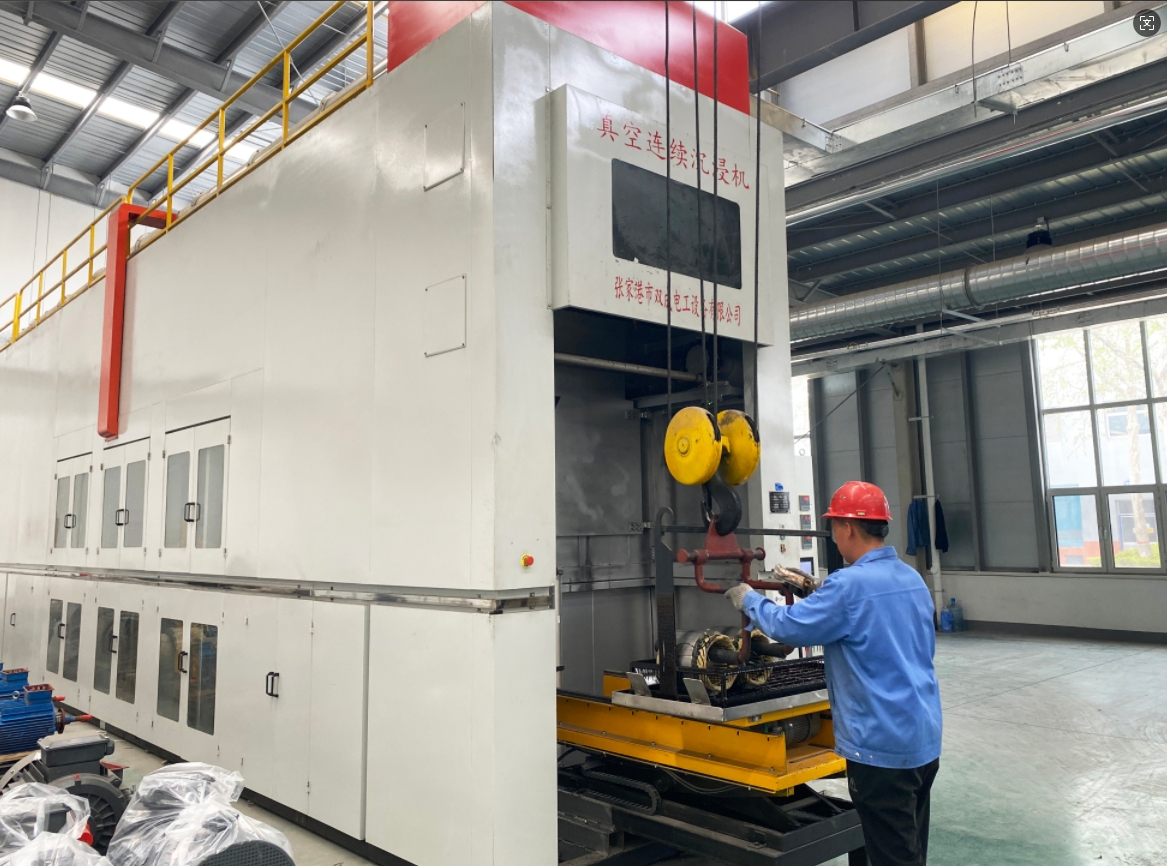The insulation treatment of windings is an insulation reinforcement measure carried out under the condition that the insulation structure of the windings meets the design requirements. That is, through the impregnation and baking process, the insulating varnish penetrates into all the gaps of the windings. Through the heating and curing method, the motor windings become an integrated whole with good insulation performance, which not only meets the insulation requirements of the motor but also has a certain improvement effect on the motor’s temperature rise, vibration and noise performance.
The impregnation and baking process of motor windings has undergone significant improvements in the development of motor products. It has gradually evolved from the original drip painting and immersion processes to VDI vacuum impregnation and VPI vacuum pressure impregnation processes, as well as continuous vacuum impregnation processes suitable for small-sized and large-batch production. The improvement of the impregnation and baking process is more conducive to enhancing the insulation treatment effect of motor windings and is a necessary process measure for improving the reliability of motors.
During the processing of motor windings, whether for high-voltage or low-voltage motors, there are unavoidable air gaps. These gaps can be potential quality hazards that may cause faults during motor operation. Therefore, while minimizing or eliminating air gaps during the winding processing, the impregnation and baking process is adopted to first expel the moisture from the windings, then allow the insulating varnish to penetrate the gaps, and finally, through sufficient temperature, cause the insulating varnish to change from liquid to solid, thus bonding the windings into a single unit.
During the process of winding insulation treatment, different treatment methods will have different effects. The dip coating and immersion processes have significant limitations on improving the quality of the windings. With the continuous improvement of the dip coating equipment, these processes are only carried out in some repair units. Compared to the relatively standardized motor repair manufacturers and most motor manufacturers, all have fully implemented the VPI dip coating process. This can better meet the dip coating effect of the windings. However, to ensure a good curing effect, the connection of the dip coating and drying processes, as well as the control of the drying temperature, are very crucial and are also the key points of the control in the insulation treatment process of motor windings.
Post time: Jun-03-2025

